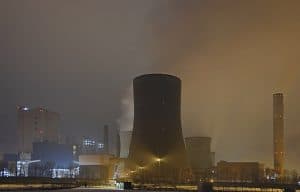Huffington Post
13 September 2012
More than seven million Californians live within 50 miles of the San Onofre nuclear plant, which was abruptly shut down after safety inspectors discovered radioactive steam leaking at the facility in late January. The unexpected closure of San Onofre raises legitimate concerns about the safe operation of nuclear plants. To further complicate matters, both of California’s aging nuclear plants — San Onofre and Diablo Canyon — are located near active fault lines, greatly jeopardizing the safety of millions of Californians in the event of an earthquake comparable to the one that caused multiple meltdowns at Japan’s Fukushima Daiichi nuclear plant.
There is, however, one upside of San Onofre’s indefinite closure. Now, state policymakers have a pivotal opportunity to significantly expand the use of distributed renewable energy resources to offset San Onofre’s lost generation capacity. A shift to distributed solar, wind and biomass energy generation would prove cost-effective for California ratepayers and enhance grid reliability should future outages at nuclear plants take place.
In fact, reliance on San Onofre nuclear plant has proven exorbitantly costly for Californians. Southern California Edison (SCE), the majority owner of the plant, charges ratepayers about $54 million per month for San Onofre, even now, as the plant provides no services whatsoever. Furthermore, ratepayers funded a$671 million replacement of the plant’s ailing steam generators just two years ago — the very same generators that are now leaking, forcing the plant to shut down.
Since the tsunami and nuclear disaster in March 2011, Japan
[fusion_builder_container hundred_percent=”yes” overflow=”visible”][fusion_builder_row][fusion_builder_column type=”1_1″ background_position=”left top” background_color=”” border_size=”” border_color=”” border_style=”solid” spacing=”yes” background_image=”” background_repeat=”no-repeat” padding=”” margin_top=”0px” margin_bottom=”0px” class=”” id=”” animation_type=”” animation_speed=”0.3″ animation_direction=”left” hide_on_mobile=”no” center_content=”no” min_height=”none”]
has discovered that shifting towards renewable energy offers a viable alternative to nuclear power. Following meltdowns at the Fukushima Daiichi nuclear plant last year, all 50 of Japan’s nuclear facilities were gradually shutdown, and only two have come back online more than a year later. The Japanese government has aggressively sought to replace the nuclear energy with solar and wind energy. This effort is expected to bring around 3.2 to 4.7 gigawatts of solar energy online by the end of 2013, which would make Japan one of the world’s largest solar markets while fully replacing the output of three nuclear plants. Japan’s transition to renewables will prevent future nuclear disasters, and also enhance grid reliability by minimizing the impact of any single power plant or transmission line failure.
Given the large costs and inherent risks of California’s nuclear plants, the state should clearly replace these power plants with distributed renewable energy. Local renewable energy generation has already proven cost-effective in the state. In 2010, the municipal utility for the city of Sacramento, California — known as the Sacramento Municipal Utility District (SMUD) — launched a well-designed program to bring 100 megawatts of local solar online. By the end of this year, almost all this capacity will have come online with no impact on electric rates compared with business as usual. It is worth noting that the 100 megawatts of local solar in the SMUD service territory is equivalent to 2.5 gigawatts of local solar if a similar program were extended across the state.
Critics will argue that solar and wind power are unreliable energy sources because of variability issues — the sun doesn’t always shine and the wind doesn’t always blow. However, multiple regions around the world have proven that cost-effective solutions are available with proper planning. Improved forecasting and innovative intelligent grid solutions, such as demand response and energy storage, are staged to complement high penetrations of local renewables to ensure improved levels of grid reliability and energy security. Recent history has shown that the abrupt and indefinite shutdown of a large-scale nuclear plant is far more difficult to plan for than the predictable variability of solar and wind energy.
Regrettably, Japan suffered the Fukushima disaster before exploring clean local energy as a wide-scale option. While implementation of the new energy strategy is still in progress, a strong case is being made in Japan that significant reliance on renewables is far safer, and ultimately, more cost-effective and reliable than nuclear generation. As state officials deal with the ongoing San Onofre crisis, it is imperative that they recognize this moment as a crucial crossroads for California’s energy future. Californians should no longer be exposed to the high costs and serious dangers posed by the state’s nuclear plants when local renewable generation provides a superior path forward.
Bill Ritter Jr., who was the governor of Colorado from 2007 to 2011, is the director of the Center for the New Energy Economy at Colorado State University. Craig Lewis is the Executive Director of the Clean Coalition, a nonprofit clean energy organization that is a leading advocate for clean local energy.[/fusion_builder_column][/fusion_builder_row][/fusion_builder_container]

Leave a Reply